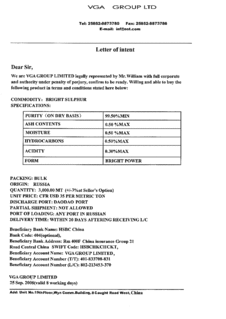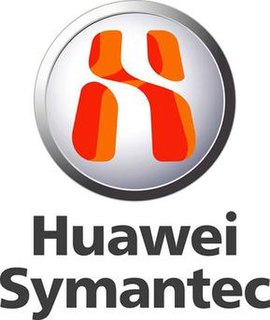
A partnership is an arrangement where parties, known as partners, agree to cooperate to advance their mutual interests. The partners in a partnership may be individuals, businesses, interest-based organizations, schools, governments or combinations. Organizations may partner to increase the likelihood of each achieving their mission and to amplify their reach. A partnership may result in issuing and holding equity or may be only governed by a contract.
NATS Holdings, formerly National Air Traffic Services and commonly referred to as NATS, is the main Air Navigation Service Provider in the United Kingdom. It inherited the traditions of UK air traffic control, which was the world's first air traffic control regime. It provides en-route air traffic control services to flights within the UK Flight Information Regions and the Shanwick Oceanic Control Area, and provides air traffic control services to fourteen UK airports.
A Joint Venture (JV) is a business entity created by two or more parties, generally characterized by shared ownership, shared returns and risks, and shared governance. Companies typically pursue joint ventures for one of four reasons: to access a new market, particularly emerging markets; to gain scale efficiencies by combining assets and operations; to share risk for major investments or projects; or to access skills and capabilities.

TheChartered Institute of Management Accountants (CIMA) is a UK based professional body offering training and qualification in management accountancy and related subjects. It is focused on accountants working in industry, and provides ongoing support and training for members.
A strategic alliance is an agreement between two or more parties to pursue a set of agreed upon objectives needed while remaining independent organizations. A strategic alliance will usually fall short of a legal partnership entity, agency, or corporate affiliate relationship. Typically, two companies form a strategic alliance when each possesses one or more business assets or have expertise that will help the other by enhancing their businesses. Strategic alliances can develop in outsourcing relationships where the parties desire to achieve long-term win-win benefits and innovation based on mutually desired outcomes.

A limited partnership (LP) is a form of partnership similar to a general partnership except that while a general partnership must have at least two general partners (GPs), a limited partnership must have at least one GP and at least one limited partner.
A strategic partnership is a relationship between two commercial enterprises, usually formalized by one or more business contracts. A strategic partnership will usually fall short of a legal partnership entity, agency, or corporate affiliate relationship. Strategic partnerships can take on various forms from shake hand agreements, contractual cooperation's all the way to equity alliances, either the formation of a joint venture or cross-holdings in each other.

The National Renewable Energy Laboratory (NREL), located in Golden, Colorado, specializes in renewable energy and energy efficiency research and development. NREL is a government-owned, contractor-operated facility, and is funded through the United States Department of Energy. This arrangement allows a private entity to operate the lab on behalf of the federal government. NREL receives funding from Congress to be applied toward research and development projects. NREL also performs research on photovoltaics (PV) under the National Center for Photovoltaics. NREL has a number of PV research capabilities including research and development, testing, and deployment. NREL's campus houses several facilities dedicated to PV research.

A letter of intent is a document outlining one or more agreements between two or more parties before the agreements are finalized. The concept is similar to a heads of agreement, term sheet or memorandum of understanding. Such outlined agreements may be mergers and acquisitions transaction agreements, joint venture agreements, real property lease agreements and several other categories of agreements that may govern material transactions.
Project finance is the long-term financing of infrastructure and industrial projects based upon the projected cash flows of the project rather than the balance sheets of its sponsors. Usually, a project financing structure involves a number of equity investors, known as 'sponsors', a 'syndicate' of banks or other lending institutions that provide loans to the operation. They are most commonly non-recourse loans, which are secured by the project assets and paid entirely from project cash flow, rather than from the general assets or creditworthiness of the project sponsors, a decision in part supported by financial modeling. The financing is typically secured by all of the project assets, including the revenue-producing contracts. Project lenders are given a lien on all of these assets and are able to assume control of a project if the project company has difficulties complying with the loan terms.

Enterprise plc was a support services company originally based in Farington in Lancashire, England. Its core markets were local authorities and utility sectors. It has recently been integrated into Ferrovial's UK company, Amey plc.
A company, abbreviated as co., is a legal entity made up of an association of people, be they natural, legal, or a mixture of both, for carrying on a commercial or industrial enterprise. Company members share a common purpose, and unite to focus their various talents and organize their collectively available skills or resources to achieve specific, declared goals. Companies take various forms, such as:
Contract management or contract administration is the management of contracts made with customers, vendors, partners, or employees. The personnel involved in contract administration required to negotiate, support and manage effective contracts are often expensive to train and retain. Contract management includes negotiating the terms and conditions in contracts and ensuring compliance with the terms and conditions, as well as documenting and agreeing on any changes or amendments that may arise during its implementation or execution. It can be summarized as the process of systematically and efficiently managing contract creation, execution, and analysis for the purpose of maximizing financial and operational performance and minimizing risk.
Co-branding, is a marketing strategy that involves strategic alliance of multiple brand names jointly used on single product or service.
In relation to juristic persons, the constitutional documents of the entity are the documents which define the existence of the entity and regulate the structure and control of the entity and its members. The precise form of the constitutional documents depends upon the type of entity.

The technology life-cycle (TLC) describes the commercial gain of a product through the expense of research and development phase, and the financial return during its "vital life". Some technologies, such as steel, paper or cement manufacturing, have a long lifespan while in other cases, such as electronic or pharmaceutical products, the lifespan may be quite short.

Huawei Symantec Technologies Co. Ltd. was a developer, producer and supplier of network security, storage and computing solutions. The joint venture was disbanded in March 2012 when Symantec sold its share in the company to Huawei, which is headquartered in Chengdu, China. Huawei originally owned 51% of the company, while Symantec owned 49%.
A relational contract is a contract whose effect is based upon a relationship of trust between the parties to which it pertains. The explicit terms of the contract are just an outline as there are implicit terms and understandings which determine the behaviour of the parties.
Foreign market entry modes or participation strategies differ in the degree of risk they present, the control and commitment of resources they require, and the return on investment they promise.
An international joint venture (IJV) occurs when two businesses based in two or more countries form a partnership. A company that wants to explore international trade without taking on the full responsibilities of cross-border business transactions has the option of forming a joint venture with a foreign partner. International investors entering into a joint venture minimize the risk that comes with an outright acquisition of a business. In international business development, performing due diligence on the foreign country and the partner limits the risks involved in such a business transaction.







